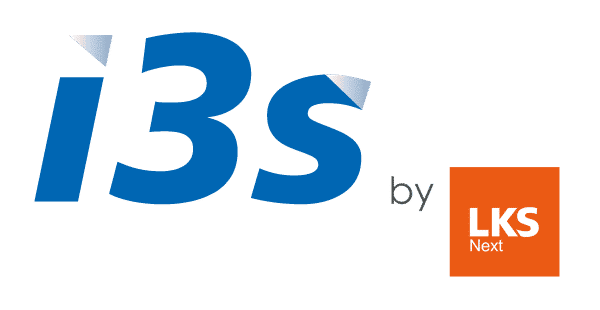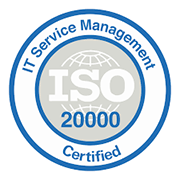One of the great challenges facing companies today is to maximize the commitment and productivity of their employees in a complex, ambiguous, volatile and uncertain environment. Quite a challenge.
Human Resources departments are continually looking for ideas to design attractive salary policies, personalized professional development plans, exciting training itineraries, differentiating Work-Life Balance plans, motivating and effective work methods..., in short, aspects that serve to attract and retain talent. A lot of effort and resources are put into this, but it often does not work. Why?

The challenge
Because generating commitment and influence necessarily involves listening, and that is not always easy. Organizations need to know the needs of their employees, and of course measure the impact that their actions have on them, to know whether or not they are meeting those needs, which can be as diverse as the number of employees the company has… Everyone has their own.
There will be workers who are motivated, above all, by a good salary; others who prioritize work-life balance, a good working environment; there will be many who are proud of the organization they work for (they consider it a good company, with a good reputation); others like the location in which it is located….
In the past, the aim was to get a job “for life”; today the aim is to be able to progress, not to stagnate… Consequently, trying to satisfy all workers by the same standard is no longer valid today.
It is clear to us, then, that employees are one of the most important links in a company and therefore they must be treated with care and attention, but we must know how to do it , and for that we must listen to them. But in what way?

Technology
There are companies that have internalized the importance of listening to their employees and deploy all the tools at their disposal, but there are still many that do not. Most companies rely exclusively on an annual survey as the only means of listening to opinions and learning about the employee experience. Undoubtedly, this is something positive that, in addition, allows us to see an evolution. However, today’s human resources departments have a multitude of tools to measure employee experience.
The large technological advances allow us to access specific solutions that allow us to obtain relevant information, which contemplate listening to the employee. From another perspective and based on their feedback, we can identify the main drivers of engagement and take specific actions to significantly improve it throughout its life cycle in the business project.
This requires extending the transactional system that considers the operational data (o-data) coming from the Human Resources Management Systems with those related to the Experience (x-data) collected through surveys and evaluations that allow incorporating information about what employees feel and think.

The strategy
The trend points to the design of a “listening strategy”. for all organizations interested in the talent retentionThis is nothing more than defining a short-, medium- and long-term listening strategy that allows us to understand the employee experience, the organization’s culture and help us make decisions that have a positive impact on the business.
This strategy allows us to:
- Measure and improve the work environment.
- Measure and improve employee engagement.
- Detect who are the drivers of engagement.
- Gather information to design and develop internal company programs.
- Measuring employee experience at specific points in time
- Measuring employee well-being.
- To know the perception of programs or initiatives that are being carried out.
- Collect suggestions to improve business processes that impact the profitability of the business.
These are some of the existing tools to reinforce the “Listening Strategy”:
- Traditional climate surveys: These are used to measure aspects that change slowly over time, but for which a large volume of information needs to be collected. For example, to measure corporate culture or to measure employee engagement.
- Pulse surveys: They are usually used to collect information on specific aspects. For example, to measure the evolution of a given objective or the opinion of employees in the face of specific changes.
- Entry and exit surveys. They focus on the reasons why employees decide to join or leave the company. They are used, above all, to improve recruitment processes and reduce employee turnover.
- Continuous listening surveys. They seek continuous analysis of employee feedback to identify problems before they become a problem that is difficult to solve and also to gather suggestions for improvement.
- Surveys on the quality of work: A dissatisfied employee will leave multiple traces of his dissatisfaction (bad answers, hanging work or poor results). A happy employee will receive praise from customers or recognition from colleagues.
The ultimate objective behind the tax on non-reusable plastic packaging is to encourage the circular economy, reduce waste generation and promote the recycling of plastic waste, favoring the care of the environment. care of the environment.
The Tax on non-reusable plastic packaging is a tax of an indirect nature levied on the use in Spanish territory of packaging containing plastic that is not reusable. Packaging is considered to be any product intended to provide the function of containing, protecting, handling, distributing and presenting goods.
The result
EThe combination of this set of tools for listening to the employee will be used according to the strategy defined, taking into account specific times and circumstances. However, in order to achieve good results, it is necessary:
- Be prepared to act, not just listen. Whenever employees are asked, it is necessary to share with them the results obtained, as well as the areas for improvement identified.
- To have expectations of improvement. There must be long-term commitment. Therefore, it is necessary to measure initiatives over a certain period of time to see if they are really working or not, and to obtain trends based on the comparison of historical data.
- Maintain the quality of information. To maintain quality it is necessary to measure things that are impacting the business, and that the data obtained is representative of the entire workforce.
- Have a plan to solve problems effectively. It is necessary to have a plan to manage the volume of information collected and discriminate the information that is not really useful for the company.
In short, internal listening in companies brings us innumerable benefits in every way. It helps to create a good work environment, indicates how to change things that are not working and helps to build the loyalty of those class workers in our organization.






